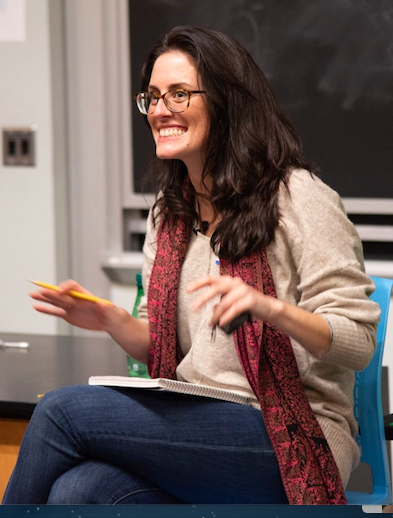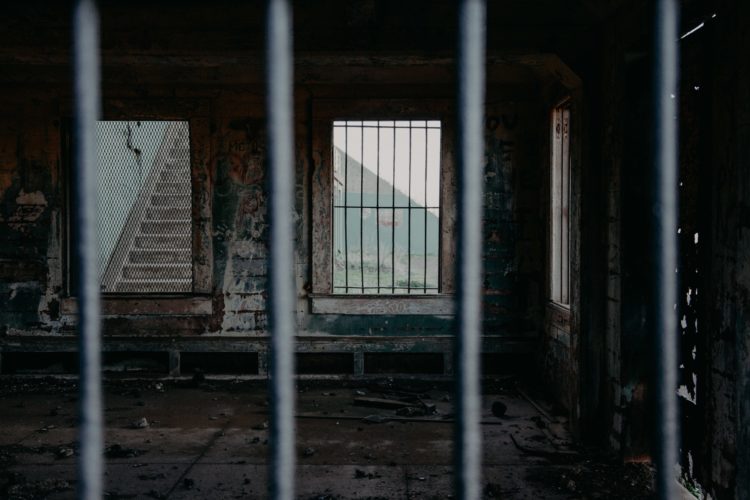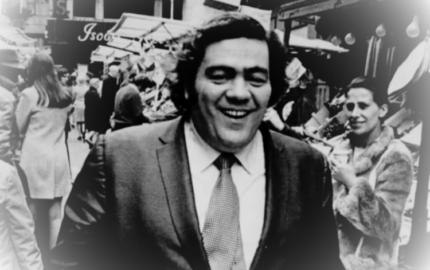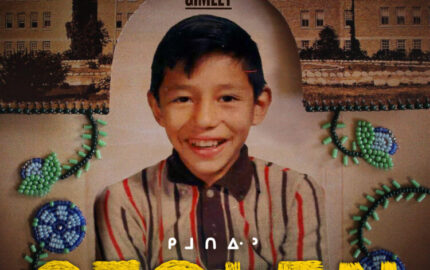When I began reading Evan Allen’s powerful, critically acclaimed Boston Globe story about Anthony Pledger, all I could think about was Jimmie. Jimmie is a violent offender — a sanitized way of saying he is a murderer and a rapist — serving a life sentence in a maximum-security prison. Anthony Pledger, the man at the center of "Under the wheel," is serving a 15-year stretch at a federal prison in California. Allen, a crime reporter at the Globe reporter, started corresponding with him in hopes of understanding what police have been known to call “Dynasty Families” — families that, as Allen writes, “seem to pass violence like an heirloom from generation to generation.” The journalist and the prison corresponded for three years.
The story that emerged, which was named a finalist for 2022 News Leader Association award, is both lyrical and raw, insightful yet full of unanswered questions. It also reveals the reporter's process, as hinted by the subhed: "This is the story of Anthony Pledger and his mother, of Anthony's lives and deaths, of Anthony and me."
Jimmie’s story is, in many ways, like Anthony’s. Evan Allen’s writing reveals a transparency that is, in many ways, like my own.
Jimmie and I have now known each other for almost seven years. He was a member of a writers’ group I started at the Oregon State Penitentiary back in 2016, a bi-monthly effort to teach the craft of nonfiction storytelling to a small group of long-incarcerated men who were invisible and voiceless. I wanted to help them use writing to understand their lives, and I wanted to learn from them what their lives were like after decades spent behind bars. Jimmie’s stories — like Anthony Pledger’s — were deeply troubling, difficult to read but impossible for me to ignore.
The stories Jimmie creates and crafts and hones are based on his filtered memory, sieved through the passage of years. After the pandemic closed our writing group down, he and I became regular mail correspondents. He mails me long letters written in cursive script so exquisite it would have made a third-grade teacher in the 20th century weep with joy. Not that Jimmie himself spent much time in third grade. By then he was already terrorizing the neighborhood, stealing, fighting and bullying as the leader of what he refers to as “my biker gang” (the bike being a bicycle).
I will never forget the story he wrote about lying in bed listening for the crunch of gravel under the wheels of his father’s truck as he came home from his factory shift. Jimmie, who remembers he was maybe 6 or 7 at the time, knew he was in for a beating. His father, he wrote, regularly whipped and punched him. He remembered that he was so scared that he peed in his bed.
Selective memory and emotional truth
This scene — and so much more — is part of the self-told narrative of his life. His backstory. The backstory he created. I do not mean he fabricated this backstory. I do not mean he lies. I do mean that, like all of us, he remembers selectively and weaves together parts of his past, unravelling and restitching, pulling a thread here and a thread there, recognizing a pattern he hadn’t noticed before. Or weaving an entirely new cloth, something with the texture and color that will help him understand who he is — and why he is who he is.
This is what Anthony Pledger does in the letters that became the foundation of Allen's profile. It is what he does in the fiction he writes. This is what we all do. These stories we tell (or write) about ourselves are our emotional truth.
Where this becomes problematic, if that is even the right word, is when journalists like Evan Allen and me use these stories to build and present to our readers a nonfiction character — not someone we created or imagined, not a composite character, but someone we are bringing to life on the page based on “evidence,” the evidence being the stories they told us, their filtered memories, their emotional truths.
Emotional truth?
This is a different kind of journalism.
We journalists are taught to check, corroborate, authenticate, substantiate, verify. Get another source to confirm. But how does one confirm an emotional truth? How does one independently verify a memory? Within a story told to us may be facts we can corroborate: an address, an arrest record, a birth year. Allen does this — as I did — when she seeks out court records. If those small details check out, we are a little more comfortable trusting the bigger story.
But we should understand — and deeply appreciate from our own lives — how quirky memory is, how memories can fade, how they can change over time, how two people experiencing the same moment can have gaspingly different interpretations (and thus memories) about it. Comparing Anthony’s and his mother’s versions of the pivotal act that begins the Globe story attests to this. Anyone who grew up with siblings and engages in “remember when?” conversations knows the (forgive the use of this word) objective truth of this.
The imperative of transparency

We do not ever want to be complacent or comfortable presenting as a “true” story — and in the world of journalism that translates into factual story — that is based largely on what people tell us about themselves. We owe it to ourselves (and our readers) to be honest and transparent about the building blocks we use to construct these stories: the emotional truths of others, the unverifiable “evidence” of memory. We can do that not by casting doubt on the authenticity of the evidence, not by undercutting our characters, but rather by putting their retellings in context.
And so I can write “Jimmie remembers it this way…” which is different, and more honest, than recreating a you-are-there scene for readers. Allen does when she opens her story:
He thinks he was maybe 15 years old. He remembers that it was cold outside where he had been wandering, and dark in the dusty hallway of his mother's apartment.
He thinks. He remembers. Maybe he was actually 14. Maybe — if the journalist knew the date of this memory and could check the National Weather Service — it could be determined that it wasn’t all that chilly.
Suppose it was possible for Allen to check these factual details, and suppose Anthony was wrong. Would that erode the emotional truth of the moment? Would we hesitate to use this story because we could poke holes in a few verifiable details? I don’t know what your answer to this is. But my answer, after years in the trenches grappling with such issues, is no. How people come to understand themselves, how they make sense of their lived experience, is who they are, is The Truth of it.
The writer's reveal
To make even thornier (and more interesting) the issues presented by Allen’s piece, she also weaves in her own story. My Medill School of Journalism teachers are spinning in their graves. (Yes, I graduated that long ago.) Yet, there is little doubt that the journalist’s own story brings another dimension to the piece. It creates, I think, trust between the reader and the journalist. This is who I am. This is what I’ve been through. You can trust me. And also, and just as important: This is how a story about someone so very different than me resonates with me. This can help us, the reader, move closer to the story as well.
Some readers of journalism will bristle at these personal revelations; others will warm to them. I am not a fan of memoir. But I am a fan of making apparent the lens through which the journalist sees the story. If the journalist is the vehicle driving the narrative, I want to know the make and model.
But I think a greater transparency is hidden within the story. It is the transparency the journalist has with the source, the character, the person who is the heart and soul of the story. That person — Anthony Pledger with Allen, Jimmie with me — is digging deep, peeling back layers, revealing to us and to our readers, the darkest part of himself. To ask someone to do that, to expect someone to do that when we do not also make ourselves known or vulnerable, is a power-grab, an exercise in extreme privilege. I hold all the cards. Tell me everything. I will tell you nothing.

For my new book, “Free: Two Years, Six Lives and the Long Journey Home,” I asked just-released prisoners, men and women, Black, brown and white, to let me into the rollercoaster of their post-incarcerated lives. I asked them to let me be present. And when this was not possible, I asked them to share thoughts, memories, texts, photos, whatever might have captured their experiences. (I wrote about the challenges of immersion reportage during the pandemic in a recent essay for the International Association for Literary Journalism Studies.) As I went about my research for the book, I verified what could be verified. But I also valued and respected the emotional truths that were being shared with me. And, above all, I gave something of myself to these six people.
We talk a lot (but not enough) today about the privilege of race, class, sex, gender. We talk not that much about the privilege of voice. As in: We have it. One way to cede some of that privilege is to show vulnerability, to show ourselves to the people we write about and to trust the emotional truths they share with us.
This is what Evan Allen has done in her beautifully crafted piece. It is what I try to do in my work.
***
Lauren Kessler is a narrative journalist who specializes in exploring invisible subcultures in our midst. The author of 15 books, she has written about the gritty world of a maximum security prison, the grueling world of ballet and the surprisingly vibrant world of those with Alzheimer's. She is former director of a graduate program in literary journalism at the University of Oregon, and currently teaches storytelling for social change at the University of Washington.



